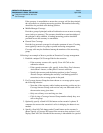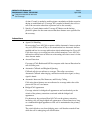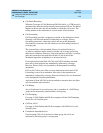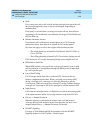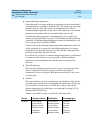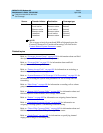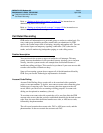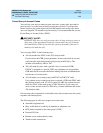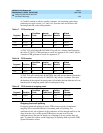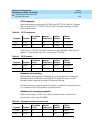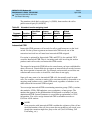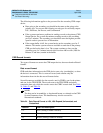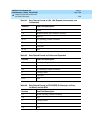
DEFINITY ECS Release 8.2
Administrator’s Guide
555-233-506
Issue 1
April 2000
Features and technical reference
1222Call Detail Recording
20
Forced Entry of Account Codes
You can force your users to enter account codes on a system-wide, per-trunk or
per-user basis, or on the basis of the digit string the user dials. If you have this
feature in place, the system rejects any call that requires an account code where
one is not supplied. To maximize system security, it is recommended that you use
Forced Entry of Account Codes (FEAC).
!
SECURITY ALERT:
DEFINITY ECS does not verify account codes. As long as the user enters a
digit string of the appropriate length, the system allows the call. You must
use Authorization Codes if you want the system to determine if the user is
authorized to make the call.
You can assign FEAC in the following ways:
■ All calls marked for FEAC on the Toll Analysis table
If you activate this CDR system parameter, all users must dial an account
code when the digits dialed match a digit string with FEAC=y. This
includes calls made by ARS or TAC.
■ Toll calls made by users with a specific class of restriction (COR)
If FEAC is assigned to a specific COR, any telephone user assigned that
COR must dial an account code before making calls that are administered
forced entry of account codes.
■ All calls made over a trunk group with FEAC in COR (TAC calls)
Users cannot access a trunk group that is assigned a COR with FEAC until
they dial an account code. If a call is routed via ARS, the system does not
check for FEAC in the trunk group’s COR. Therefore, if you want your
users to enter account codes for ARS calls, you must administer this in the
Toll Analysis table.
If an account code is required for a call and the user does not enter one, the system
responds with intercept tone.
The following types of calls never require an account code:
■ Attendant originated call
■ Busy verification of a trunk by an attendant or telephone user
■ DCS (unless required by the trunk group’s COR)
■ Personal CO Line
■ Remote access without barrier codes
■ Trunk-to-trunk connections



